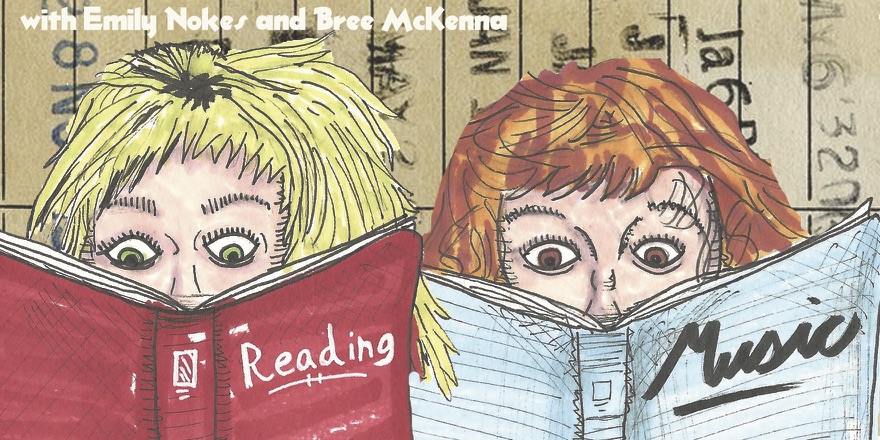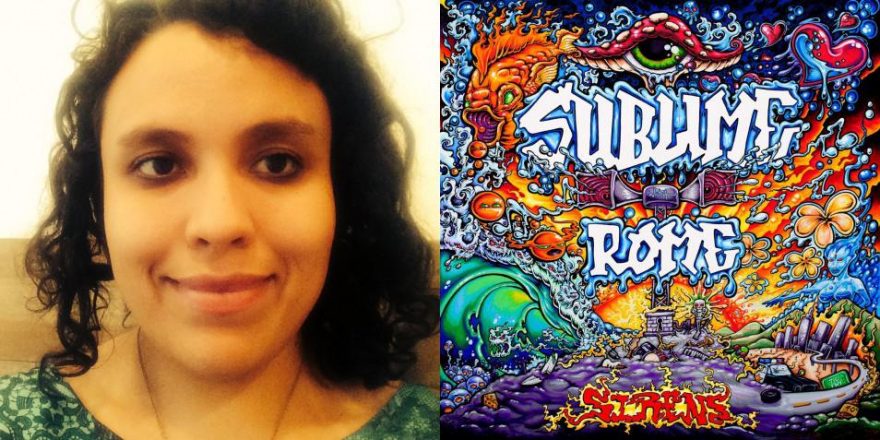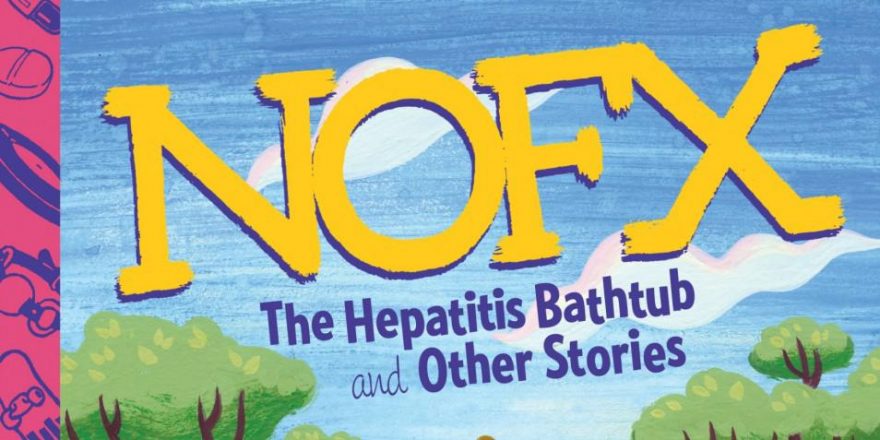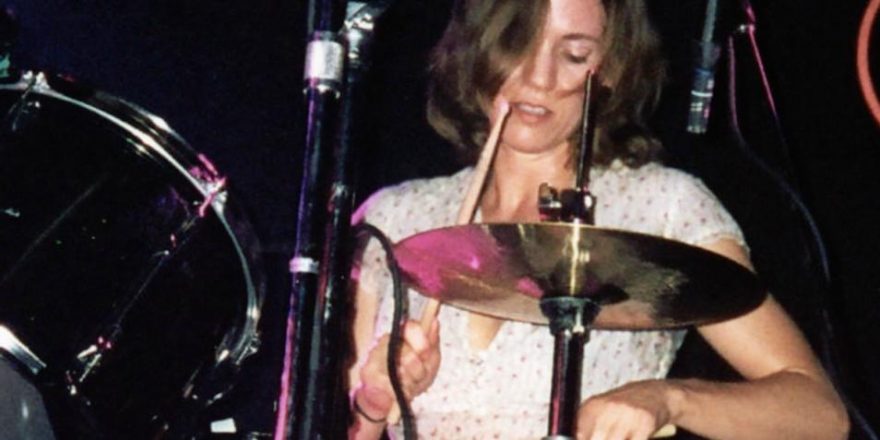This might be my bad, but I found the title of Under the Big Black Sun: A Personal History of L.A. Punk by X’s John Doe (“with Tom DeSavia and friends”) to be a little misleading. I love a good punk memoir, and the title kinda sorta indicates that Under the Big Black Sun would be just that: John Doe’s account of what went down, with some help from DeSavia, who I assumed was just a buddy who knew how to properly use semicolons. Instead of a singular focus, or even a play-by-play conversational narrative featuring anyone who as much as made an X poster (in the style of Gillian McCain and Legs McNeil’s Please Kill Me: The Uncensored Oral History of Punk, Michael Azerrad’s Our Band Could Be Your Life: Scenes from the American Indie Underground, 1981-1991, etc.), Doe contributes a laidback nine of the twenty-four total chapters, each friend (fellow scene folk) gets a whole entire chapter, and DeSavia is responsible for another two-ish, plus the foreword.
Oh yeah, the foreword! I already have another issue with this book and we haven’t even reached the numbered pages yet. After a sloppy “man I wish I coulda been there but I definitely wasn’t there but that would have been pretty cool if I was” preface written by one Billie Joe Armstrong from Green Day (you know, that Berkeley band formed about a decade after the punk scene in question), we get to the foreword. DeSavia — a music writer whose credentials hover somewhere between X fan and X super fan — makes the bold claim that this book was needed because “very little documentation” of L.A.’s early punk scene exists and…uh, what? Tom, buddy, not only are we in the blazing age of the Internet, but in terms of books, people have def written this stuff down. In fact, in preparation for this book report, I pulled out We Got the Neutron Bomb: The Untold Story of L.A. Punk by Brendan Mullen and Marc Spitz, which tells the fuck outta the story (and to which John Doe was also a contributor!) (???). And that’s not to mention the numerous books by/about other individuals who formed the same exact scene — the Runaways, the Germs/Darby Crash, and Alice Bag, to name a few. The L.A. punks may have gotten a late start, but their well-earned egos would never just let their legacy be forgotten.
So this isn’t necessarily by or about John Doe or X at all, as I’d hoped. Instead, Doe’s role seems to be the slightly stoned introvert throwing a party for his loud, flamboyant friends who inevitably steal the show and probably some of his vintage silverware. The result is a somewhat disjointed collection of essays that ramble through the people, places, smells, drugs, clothing and music of the time, with Doe popping in every so often to see if you need more warm beer or another poetic description of a disgusting apartment building. (Bless those descriptions — I would actually read an entire dissertation on the debauched Plunger Pit parties alone).
So given the way it’s organized, the best and worst parts of this book are the same thing: a dozen or so authors are given as much space as they want to describe what L.A. punk meant to them, which leads to inevitable similarities that start to blend together (both the “let me describe what L.A. was like before punk” and “we didn’t realize what an important time it was when we were in it, even though we kind of did” sentiments get tired after a while — and we might finally be at the stage where we can put a cap on multiple excessive descriptions of how awful/genius Germs shows were). Since we’re not going for a complete history lesson here, it’s the less generalized chapters that held my interest the most.
Mike Watt’s piece, written in lilting hillbilly savant style, gets the most points for personality. His unbelievably humble and sincere account of the Minutemen’s short history and how much D. Boon meant to him absolutely made me cry, which I absolutely did not expect.
Other highlights come from the women of the scene, who built a sort of a disheveled matriarchy, forming bands and their own language of extreme fashion. Jane Wiedlin of the Go-Go’s brings us around to the infamous punk-ruled Canterbury apartments (situated four hundred feet from the infamous punk-ruled venue the Masque) and throws in a few stories of love and deception, followed by the ace line “Go’s before bro’s.” I could read an entire book on how Charlotte Caffey (also of the Go-Go’s) became a songwriter. Did you know she wrote “We Got the Beat” while high as a kite, locked in her apartment on New Year’s Day? (So that’s how you do it!)
Early L.A. scene writer Pleasant Gehman depicts wild parties in the queer-and-female-friendly inclusiveness of the scene’s early days, worshipping at the deranged altar of such bands as the Screamers and the Weirdos. As drugs and violence changed the scene, she notes that eventually the first women of punk were some of the first neo-rockabilly converts because the shows were safer physically.
Another important part of Big Black Sun is the focus on the Latino bands of the time, such as the Plugz, Los Lobos, the Bags, the Zeroes, Los Illegals and more. Robert Lopez (a.k.a. El Vez), Chris D (the Flesh Eaters) and Teresa Covarrubias (the Brat) all contribute and offer perspective on East L.A.’s diverse musicians and their role in the city’s golden age of punk.
We also hear from Exene Cervenka (X) and Dave Alvin (the Blasters). Henry Rollins of Black Flag (who is legally obligated to comment in every book/documentary that mentions the word “punk”) stops by and politely compliments L.A. for its glamorous fashion sense and artful music. In the penultimate chapter, journalist Kristine McKenna offers a eulogy to the scene that faded with closed venues, the death of Darby Crash and others, the reality of drug use, the arrival of hardcore, the dawning of the age of MTV, and the ever-complicated business of making money from music.
Speaking of hardcore, the only chapter that made me want to roll my eyes right into my brain was written by violence-bro Jack Grisham (T.S.O.L.). Beyond the larger implications of what it meant when brutal hardcore shows seeped from Orange County into L.A., Grisham (a recovered drug/alcohol user and anarchist who currently writes books about what an asshole he used to be, and, according to his Wikipedia page, also has a hypnotism degree [???]) writes so pompously I’m not even going to dignify it by adding further disdain to the disdain-pile he obviously gets off on.
Anywho, Grisham’s grade-curve plummeting stinker aside, while each piece in Under the Big Black Sun ranges from fairly interesting to downright fascinating on its own, the book could be more cohesive as a whole — or at least organized a bit better.
But then that doesn’t sound very punk, does it?







